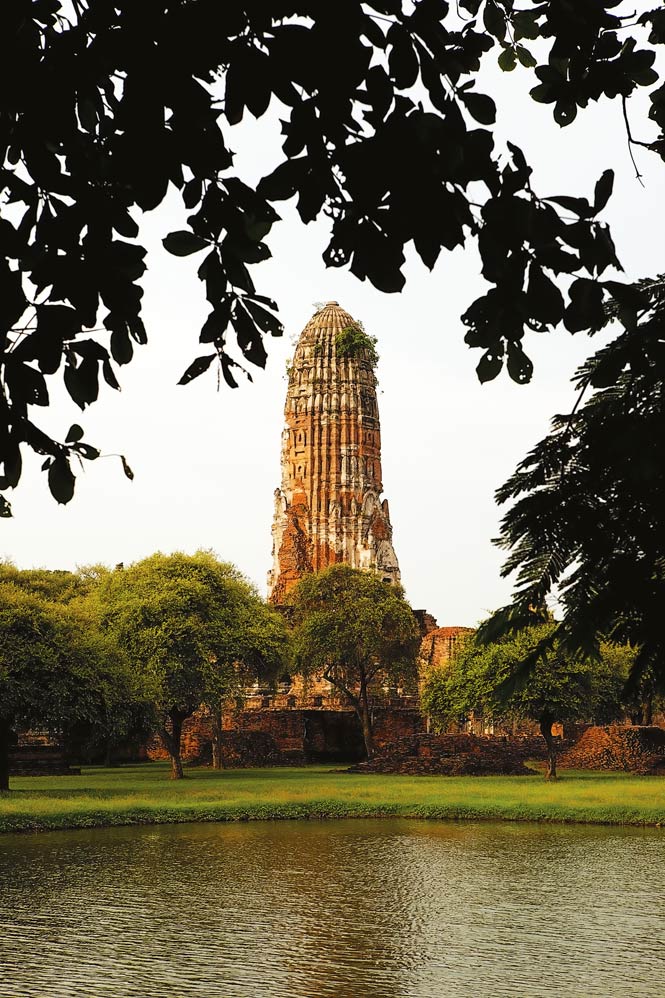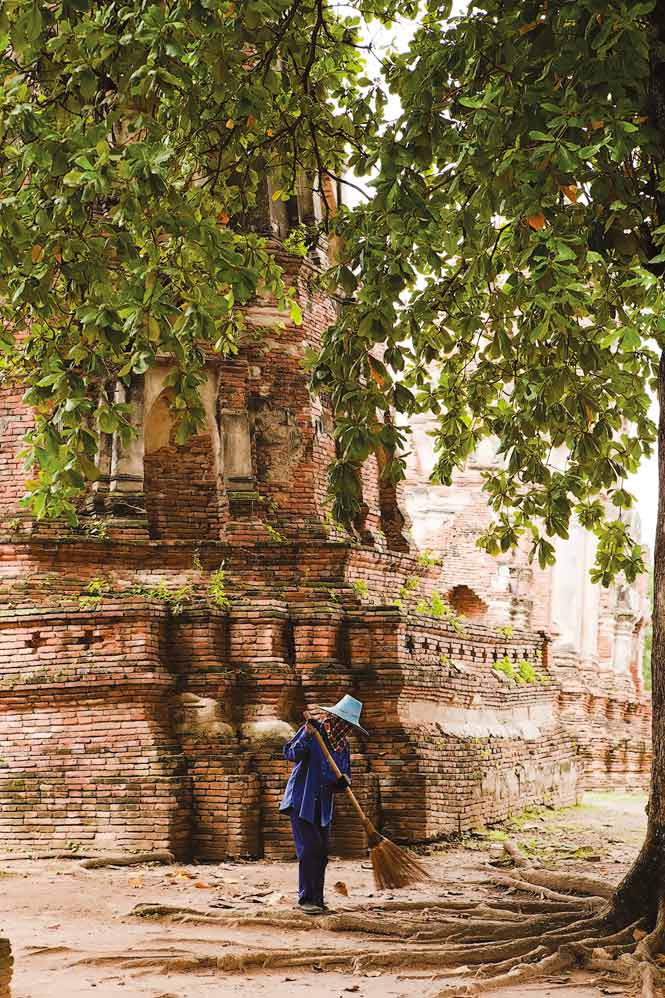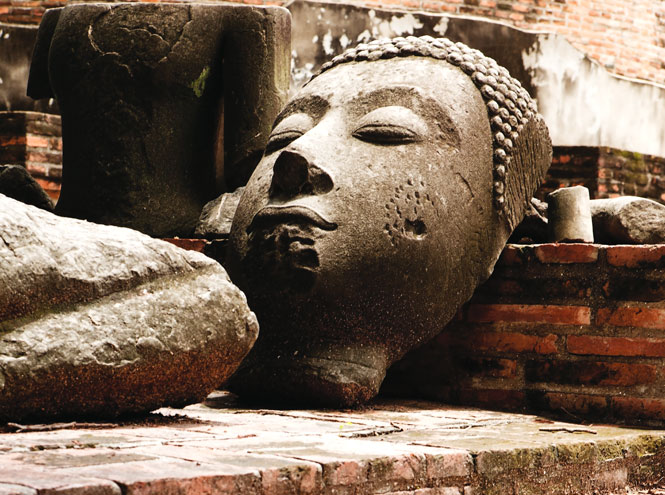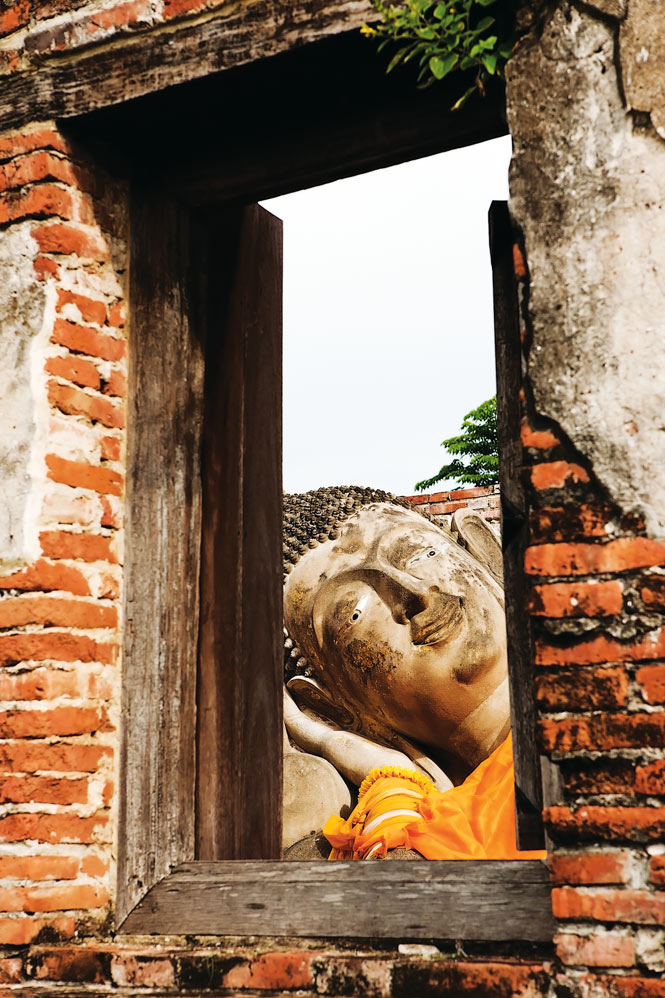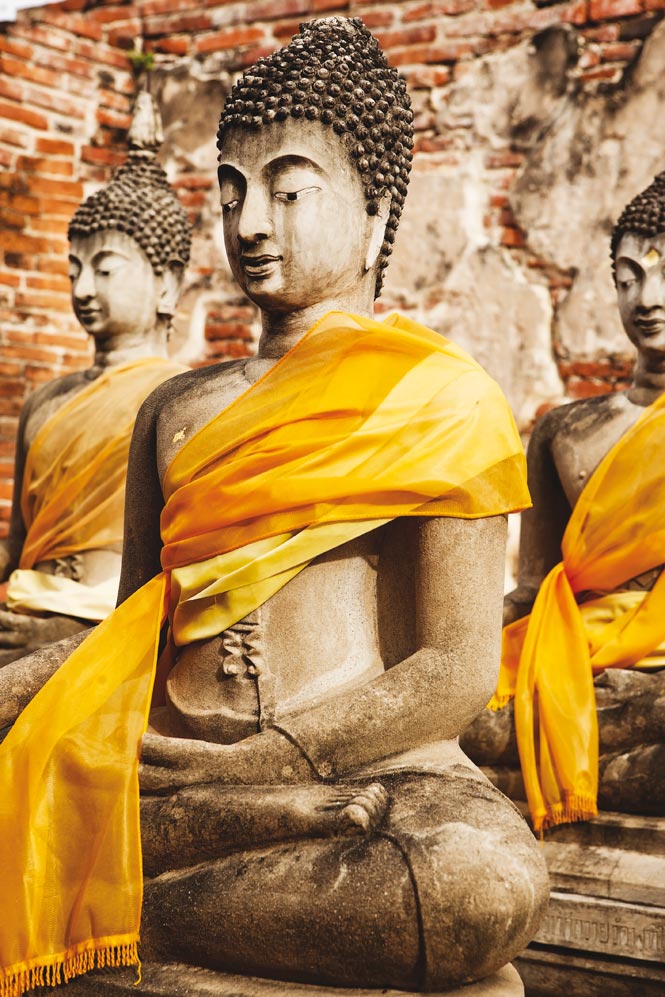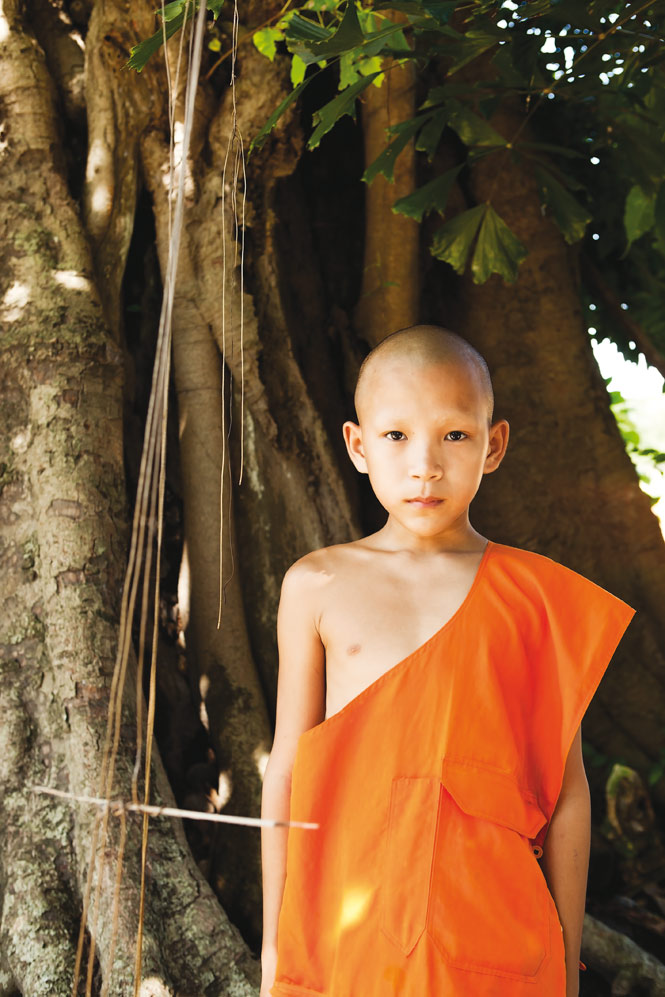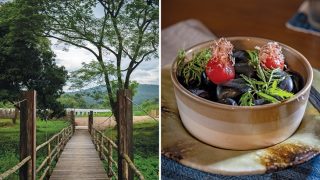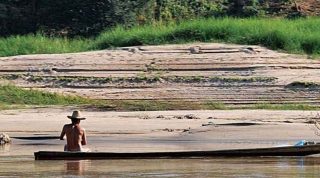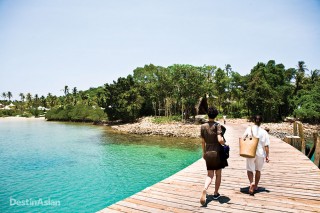Above: Among the ruins of Wat Ratchaburana.
Once one of the greatest cities in the world, the ruins of Ayutthaya still testify to the glories of Siam’s golden age
By Christopher R. Cox
Photographs by Galilea Nin
Sometimes, the treasures of travel seem to hide in plain sight. That’s the case with the ancient Siamese royal capital of Ayutthaya, a UNESCO World Heritage Site situated just 86 kilometers north of Bangkok. While I’ve explored nearly every corner of Thailand over the past 20 years, I somehow never made my way to Ayutthaya, despite the fact that it’s virtually part of the Bangkok metropolitan area. There were always other temples and monuments to explore. Other day trips. Other weekend getaways.
Then I stumbled upon a yellowed paperback copy of Siamese White by Maurice Collis. It was instantly compelling: a 1936 biography of the near-forgotten English adventurer Samuel White, who sailed for Madras in 1675 to make his fortunes with the British East India Company, and ended up a mandarin in the royal court of Siam, described by a contemporary as “as great a city as London.”
The walled capital that White encountered—with a population of one million people, foreign embassies, and trade networks extending as far as Japan, the Philippines, Portugal, and Holland —wasn’t Thailand’s modern-day seat of government, however. Bangkok then was little more than a collection of rude huts standing on swampy ground. The great city was Ayutthaya. Clearly, it was time for me to finally pay a visit.
What had in centuries past been a days-long journey up the serpentine Chao Phraya River is now less than a 90-minute hop from Bangkok by road or rail. Beyond Don Muang, the old international airport, the high-rise condos and office towers of Bangkok segue into shanty towns that give way to canals lined with stilt houses and finally the sprawling Central Plains, a patchwork of rice fields punctuated with water buffalo and wading birds.
The train station on Ayutthaya’s eastern outskirts conveys no sense of place: it’s just a busy, utilitarian building in a seemingly standard-issue Thai province. That impression fades beyond Naresuan Bridge, which spans the 14th-century canal that technically transformed the royal capital into an island. As I enter the city’s historic core, I encounter broad, tree-shaded streets carrying only a fraction of Bangkok’s infamous traffic. A parklike atmosphere pervades the western half of the island; this is the World Heritage Site, some three square kilometers characterized by expansive greenswards and, erupting through a sylvan blanket, the rocket-shaped towers of at least a dozen temples.
“These are the deep roots of the Thai people,” says Chirdsak “Ake” Sriyakorn, who owns the nearby Luang Chumni Village, an atmospheric six-room hotel comprising a collection of decades- old wooden Thai houses that he transplanted from the countryside. “Around here we have many factories: automobiles, electronics. But not on this island. Here, we are preserving history.”
Ake, whose mother’s family hails from the old town, suggests I explore that history on bicycle. With its flat terrain, grid-pattern streets, shaded brick sidewalks, and light traffic (Ayutthaya’s urban population is less than 90,000—not even a tenth of its golden-age headcount), the island is ideal two-wheeler territory.
Serving as Siam’s capital from 1350 until 1767, Ayutthaya must have presented an amazing spectacle, especially to first-time Western visitors. While many of Asia’s colonial-era ports and trading centers offered the trappings of their European counterparts, with jetties, fortifications, and warehouses built in the manner of the British or Dutch or Portuguese, Ayutthaya was an entirely Thai enterprise. Hundreds of gilded temples studded the island-city, along with enormous wooden palaces, elephant kraals, and a vast web of canals that earned it the sobriquet “the Venice of the East.”
The site of the original settlement—a level tract of land surrounded on the north, west, and south by an oxbow of the Lopburi River—provided a natural moat against enemy attack. Founder King Ramathibodi I ordered a channel dug across the peninsula’s eastern neck to further insulate it, and later added shunts to join the Chao Phraya and Pasak rivers. From this newly secure seat of power, which commanded the waterways of the Central Plains and offered sea access via the Chao Phraya, Ayutthaya quickly rose to prominence as a glittering entrepôt.

